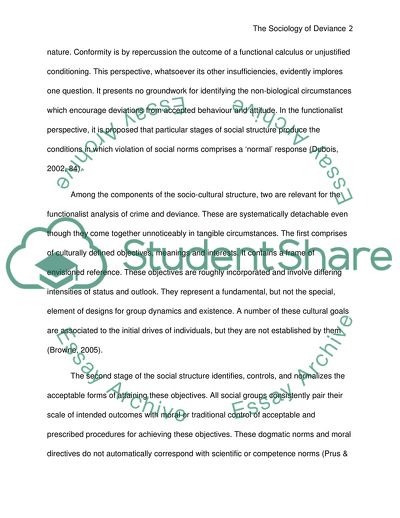Cite this document
(The Sociology of Deviance Assignment Example | Topics and Well Written Essays - 1500 words, n.d.)
The Sociology of Deviance Assignment Example | Topics and Well Written Essays - 1500 words. https://studentshare.org/social-science/1721941-access-the-usefulness-of-structuralist-approaches-in-providng-an-understanding-of-crime-and-deviance
The Sociology of Deviance Assignment Example | Topics and Well Written Essays - 1500 words. https://studentshare.org/social-science/1721941-access-the-usefulness-of-structuralist-approaches-in-providng-an-understanding-of-crime-and-deviance
(The Sociology of Deviance Assignment Example | Topics and Well Written Essays - 1500 Words)
The Sociology of Deviance Assignment Example | Topics and Well Written Essays - 1500 Words. https://studentshare.org/social-science/1721941-access-the-usefulness-of-structuralist-approaches-in-providng-an-understanding-of-crime-and-deviance.
The Sociology of Deviance Assignment Example | Topics and Well Written Essays - 1500 Words. https://studentshare.org/social-science/1721941-access-the-usefulness-of-structuralist-approaches-in-providng-an-understanding-of-crime-and-deviance.
“The Sociology of Deviance Assignment Example | Topics and Well Written Essays - 1500 Words”. https://studentshare.org/social-science/1721941-access-the-usefulness-of-structuralist-approaches-in-providng-an-understanding-of-crime-and-deviance.


